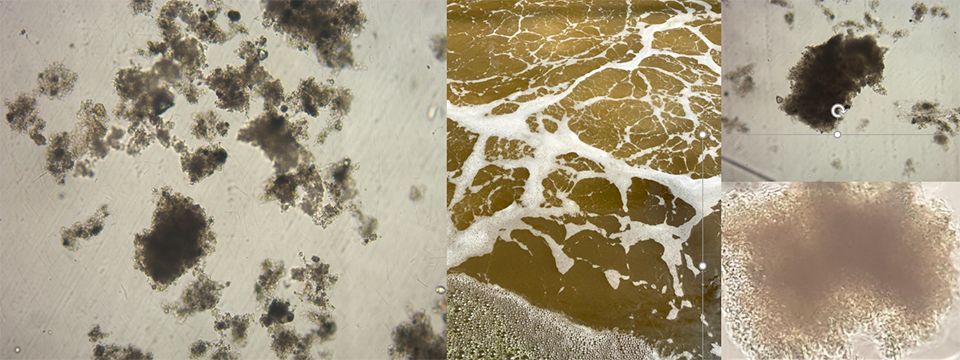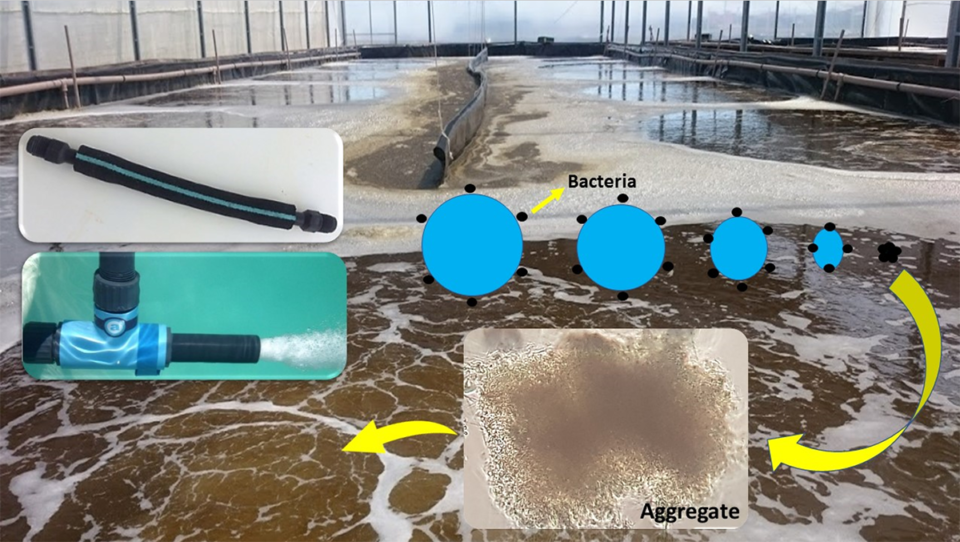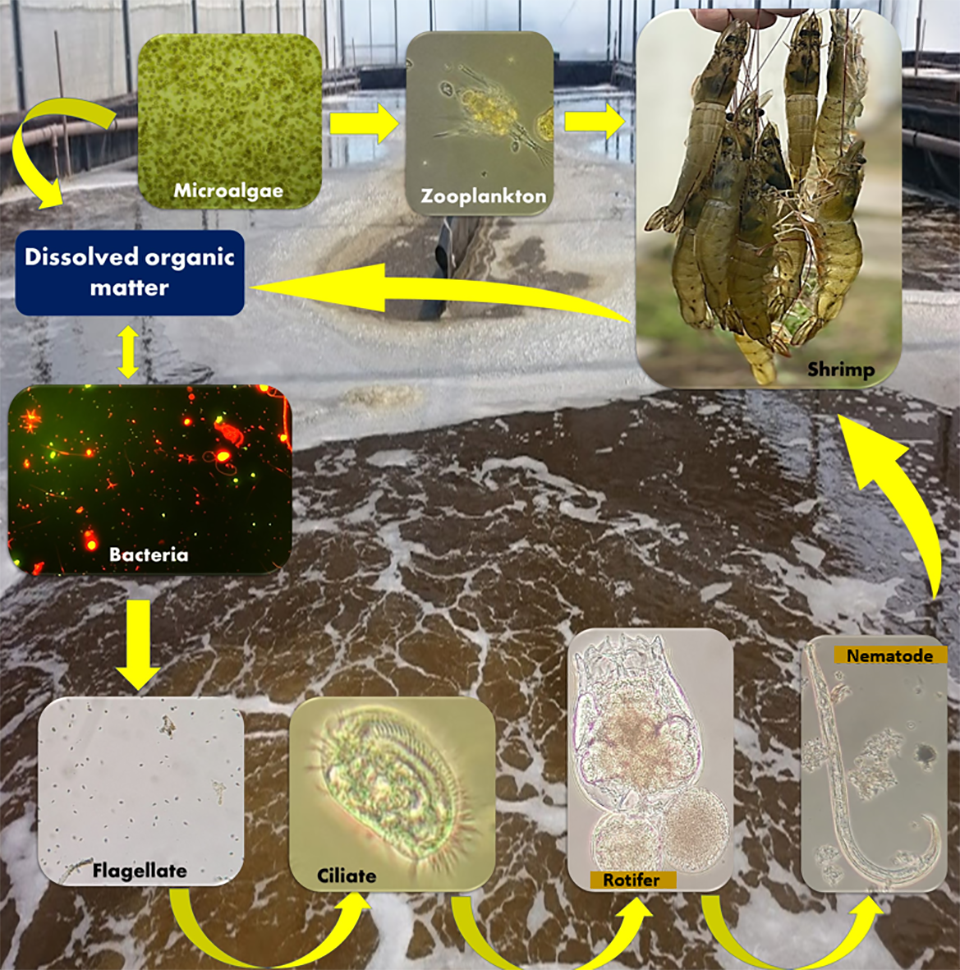Effect of aeration on the development of the microbial community in biofloc technology systems
Published on by Water Network Research, Official research team of The Water Network in Case Studies
Dariano Krummenauer, Ph.D. Wellica Gomes dos Reis Paulo Cesar Abreu Aline Bezerra Wilson Wasielesky Jr., Ph.D. Bob Advent
Results show the air-injector nozzle aeration treatment generated a greater diversity of microorganisms

This study evaluated the effect of three aeration systems on the development of the microbial community in shrimp biofloc technology systems. Results showed the air-injector nozzle treatment generated a greater diversity of microorganisms, and enhanced biofloc development and overall shrimp productivity.
Biofloc technology (BFT) systems are well established in the production chain of marine shrimp. Characterized by the stimulation of a microbial community, the BFT system is bio-secure and improves nutrition (supplementing the diet and improving gut health of the shrimp) and water quality (nitrifying compounds) with minimal to zero water exchange per cycle of production.
The formation of microbial aggregates, or bioflocs, is dependent on physical, chemical and biological interactions that are stimulated by the rate of mixing and oxygenation generated by the aeration process. Bacteria proliferate by attaching to the bubbles, utilizing the available nutrients and organic matter in the water column.
Bubble size generated by mechanical aeration plays an important role in biofloc formation. Bacteria adhered to nanobubbles form bioflocs more rapidly than with larger bubbles. Developing a mature biofloc is crucial to stabilizing both the availability of nutrients as a food supplement and the availability of nitrifying bacteria essential to maintaining optimal water quality in the BFT system (Fig. 1).

Fig. 1: Description of aggregates development in bubbles (blue circle); from Johnson (1976) and adapted for Gomes dos Reis (2021), originally from Johnson (1976). Photos by Wellica Reis and Dariano Krummenauer.
This new, mature bacterial biomass may be later consumed by protozoa, thus increasing the food availability in the BFT system, a phenomenon known as the “Microbial Loop” (Fig. 2). Within this context, it is essential that producers use efficient aeration devices that provide the best cost-benefit in terms of productivity. In recent years, the FURG team has focused its BFT research on studies of the effect of mechanical aeration on biofloc formation and availability.

Fig. 2: Concept of Microbial Loop as suggested by Azam et al. (1983) and adapted for Gomes dos Reis (2021). Photos by Wellica Reis, Mariana Holanda and Dariano Krummenauer.
The dissolved organic matter generated from the dead microalgae (and leftover feed) leads to a new trophic chain in which the dissolved organic matter is assimilated by bacteria, that are then consumed by other groups of microorganisms (such as flagellates), which in turn are preyed upon by ciliates, providing the development of other groups, such as rotifers and nematodes. The microorganisms developed from this loop contribute as a supplementary natural nutritional source for the shrimp and for the cycling of nutrients in the rearing ponds.
In this article, we present results of research to compare the performance of two commercial aeration systems, commercial air injectors (nozzles) and micro-perforated hoses (Aero-Tube™) – previously discussed in detail in several published papers – and their effect on the microbial composition and enhancement of the biofloc formation.
We are grateful for the financial support provided by the National Council for Scientific and Technological Development (CNPq), Research Support Foundation of the Rio Grande do Sul State (FAPERGS) and the Coordination for the Improvement of Higher Level Personnel (CAPES). Special thanks to All-aqua for donating the experimental air injectors and technical support. GUABI Animal Health and Nutrition S.A., AQUATEC and TREVISAN are also our sponsors.
Taxonomy
- Aquaculture
- Aquaculture Systems
- Flocculation
- Aeration
- Shrimp Farming
- Water microbiology
- Aeroponics